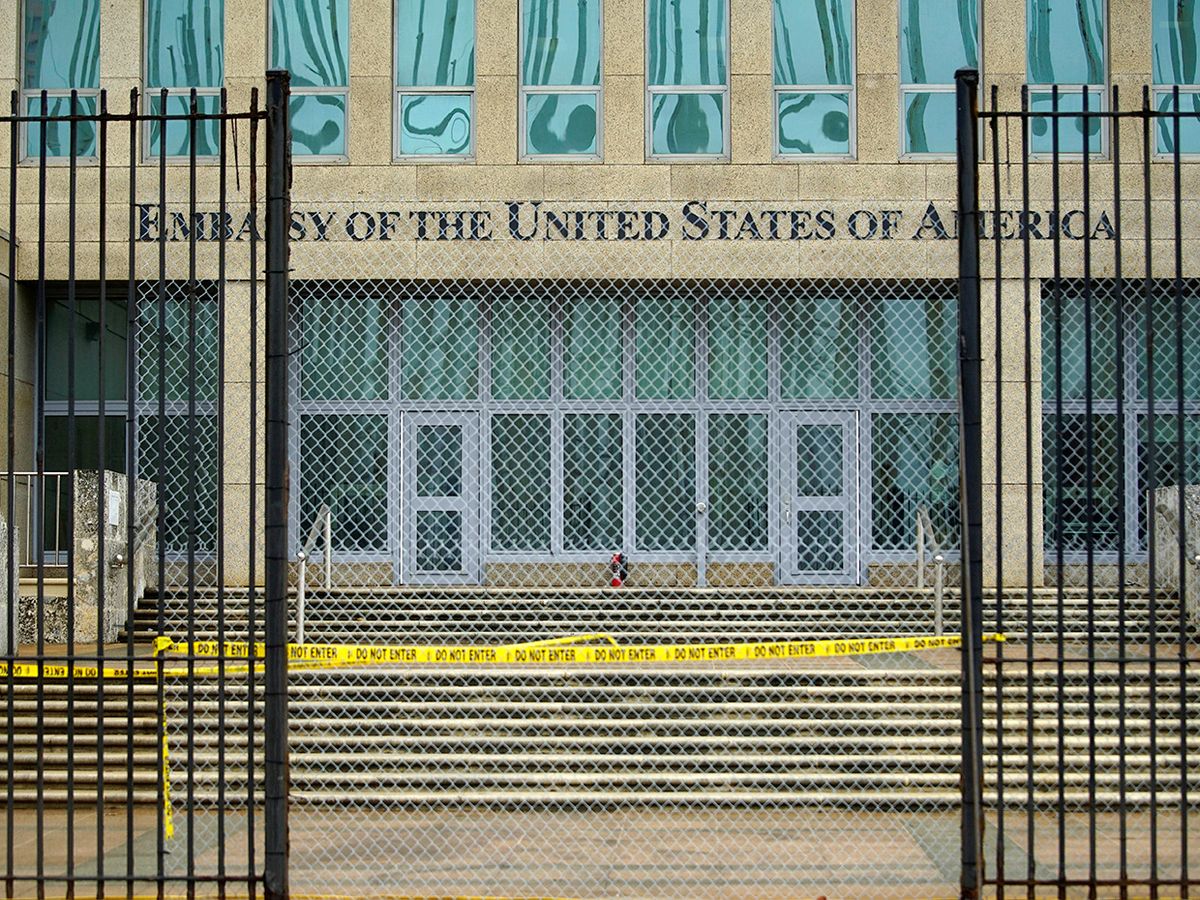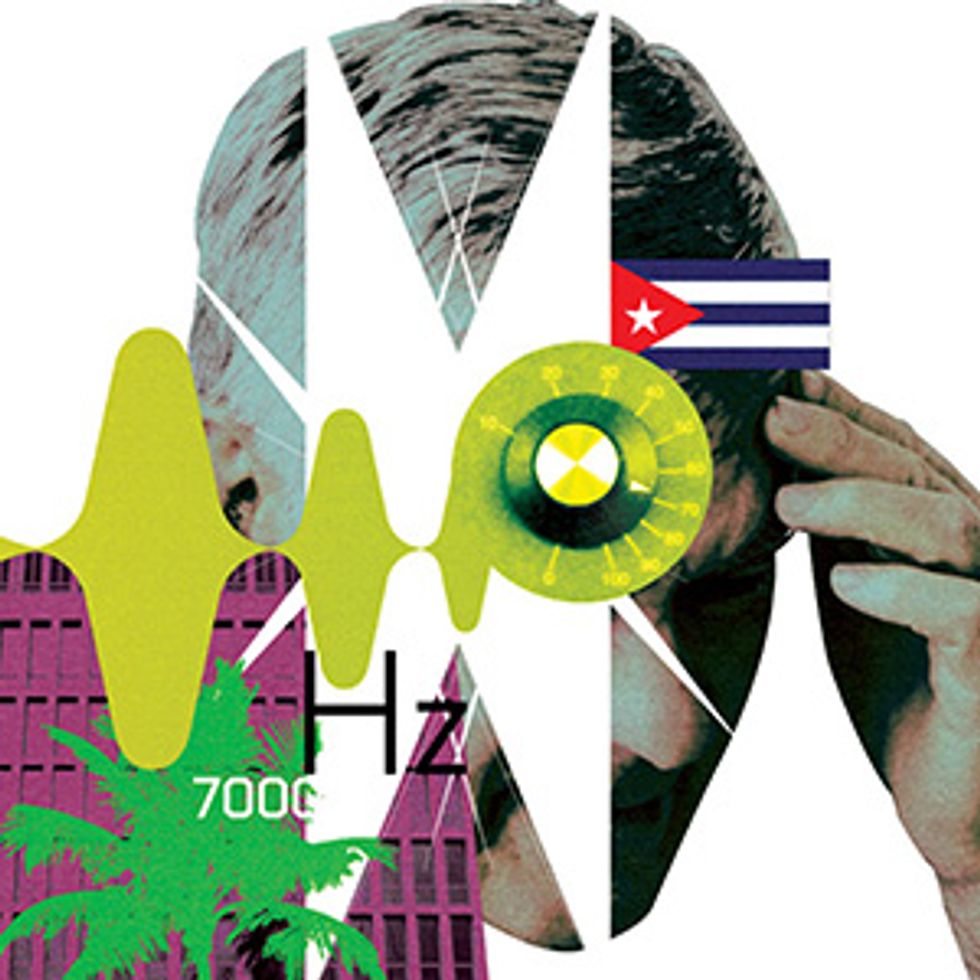Last August, reports emerged that U.S. and Canadian diplomats in Cuba had suffered a host of mysterious ailments. Speculation soon arose that a high-frequency sonic weapon was to blame. Acoustics experts, however, were quick to point out the unlikeliness of such an attack. Among other things, ultrasonic frequencies—from 20 to 200 kilohertz—don’t propagate well in air and don’t cause the ear pain, headache, dizziness, and other symptoms reported in Cuba. Also, some victims recalled hearing high-pitched sounds, whereas ultrasound is inaudible to humans.
The mystery deepened in October, when the Associated Press (AP) released a 6-second audio clip, reportedly a recording of what U.S. embassy staff heard. The chirping tones, centered around 7 kHz, were indeed audible, but they didn’t suggest any kind of weapon.
Looking at a spectral plot of the clip on YouTube, Kevin Fu, a computer scientist at the University of Michigan, noted some unusual ripples. He thought he might know what they meant.
Fu’s lab specializes in analyzing the cybersecurity of devices connected to the Internet of Things, such as sensors, pacemakers, RFIDs, and autonomous vehicles. That work has taught him that modern electronics often behave in unpredictable ways and that such devices can be manipulated—intentionally or inadvertently—using carefully crafted acoustic or radio interference. To Fu, the ripples in the spectral readout suggested some kind of interference.
He discussed the AP clip with his frequent collaborator, Wenyuan Xu, a professor at Zhejiang University, in Hangzhou, China, and her Ph.D. student Chen Yan. “We saw it as an interesting puzzle,” says Xu, whose lab works on embedded security, including the use of ultrasound and radio waves to fool voice-recognition systems and self-driving cars. “It was a lot of fun to try to solve it.”
“I thought it might be subharmonics,” Fu recalls. “But a week later, Chen said, ‘No, Kevin, you’re wrong, and I just did an experiment to prove it.’ ”
Yan and Xu started with a fast Fourier transform of the AP audio, which revealed the signal’s exact frequencies and amplitudes. Then, through a series of simulations, Yan showed that an effect known as intermodulation distortion could have produced the AP sound. Intermodulation distortion occurs when two signals having different frequencies combine to produce synthetic signals at the difference, sum, or multiples of the original frequencies.
When signal processing equipment behaves in a nonlinear way, it can cause this type of distortion. For example, Fu says, microphone circuitry can exhibit nonlinear behavior, and waves propagating through air can also behave in a nonlinear fashion. “As acoustic waves containing multiple frequencies travel through a nonlinear system, you can get these bizarre ripples in the spectrum of the signal,” he explains. “At the same time, intermodulation distortion can produce lower-frequency signals than the original signals. In other words, inaudible ultrasonic waves going through air can produce audible by-products.”
Yan followed up the simulations with lab experiments, in which he used two ultrasonic speakers, one emitting a signal at 25 kHz and the other at 32 kHz. When he crossed the two signals, it produced the telltale high-pitched sound at 7 kHz, which was equal to the difference between the two speakers’ frequencies—and the same frequency as in the AP audio. In a nod to the Internet meme “rickrolling,” Yan was even able to embed an ultrasonic version of the Rick Astley song “Never Gonna Give You Up,” which became audible at the point where the two signals crossed.
Having reverse engineered the AP audio, Fu, Xu, and Yan then considered what combination of things might have caused the sound at the U.S. embassy in Cuba. “If ultrasound is to blame, then a likely cause was two ultrasonic signals that accidentally interfered with each other, creating an audible side effect,” Fu says. There are existing sources of ultrasound in office environments, such as room-occupancy sensors [see, for example, “How an Ultrasonic Sensor Nearly Derailed a Ph.D. Thesis”]. “Maybe there was also an ultrasonic jammer in the room and an ultrasonic transmitter,” he suggests. “Each device might have been placed there by a different party, completely unaware of the other.”
One thing the investigation didn’t explore was whether the AP audio could have produced the wide range of symptoms, including brain damage, that afflicted embassy workers. “We know that audible signals can cause pain, but we didn’t look at the physiological effects beyond that,” Fu says. At press time, the FBI had yet to announce the results of its investigation. A panel of Cuban scientists and medical doctors, meanwhile, concluded that a “collective psychogenic disorder” brought on by stress may have been at work.
Fadel Adib, a professor at MIT who specializes in wireless technology for sensing and communications, calls the study by Fu and his colleagues “a creative take on what might have happened.” Adib, who wasn’t involved in the research but reviewed the results, adds that wireless signals can and do interact with one another. “And if that happens, you’ll hear signals you wouldn’t expect to hear,” he says. “Given all the possible explanations, this definitely seems the most plausible and the most technically feasible.”
Fu is careful to offer a caveat: “Of course, we don’t know for certain this was the cause. But bad engineering just seems much more likely than a sonic weapon.”
This article appears in the March 2018 print issue as “Reverse Engineering the ‘Sonic Weapon.’ ”
Editor’s note: An article by Kevin Fu, Wenyuan Xu, and Chen Yan about their research will be published by IEEE Spectrum in March. Their technical report, “On Cuba, Diplomats, Ultrasound, and Intermodulation Distortion,” is available on the Security and Privacy Group’s website [PDF].

 See
IEEE Spectrum’s article by Kevin Fu, Wenyuan Xu, and Chen Yan:
How We Reverse Engineered the Cuban ‘Sonic Weapon’ Attack
See
IEEE Spectrum’s article by Kevin Fu, Wenyuan Xu, and Chen Yan:
How We Reverse Engineered the Cuban ‘Sonic Weapon’ Attack